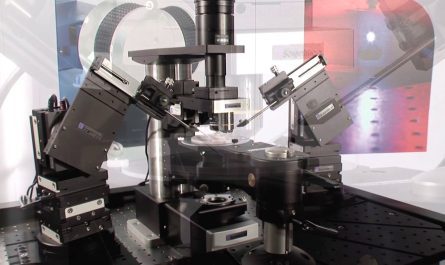The skincare industry has seen tremendous advancements in recent years with technological innovations that help people take better care of their skin. One such innovation is the facial skin analyzer which uses computer vision and deep learning algorithms to provide detailed analysis of a person’s skin. Let’s take a deeper look at how this technology works and the impact it is having.
How does a facial skin analyzer work?
A facial skin analyzer works by using a high-resolution camera to take detailed images of a person’s face under controlled lighting conditions. These images are then processed using computer vision and deep learning algorithms. Computer vision techniques are used to detect and segment different parts of the face like the forehead, cheeks, nose etc. The deep learning models have been trained on large datasets of skin images labeled with conditions to recognize various skin attributes.
Some of the key attributes that modern facial skin analyzers can detect include – skin tone or color, pore size, fine lines, wrinkles, dark circles, blemishes, redness, spots, hyperpigmentation etc. The software quantifies these attributes and provides an objective numerical assessment of various skin parameters. It also compares the skin to databases of different age groups to determine the biological age of the skin. All this detailed skin analysis happens within seconds of capturing the images.
Delivering insight with easy to understand results
While the underlining technology might be complex, facial skin analyzers ensure the results are delivered in a simple manner for everyday users. The software synthesizes all the quantitative measurements and presents an easy to understand report card detailing things like – skin type, moisture level, aging signs, trouble areas, concerns to address etc.
It also provides customized recommendations for skincare routines, products and treatments. Some analyzers integrate directly with online databases of skincare products to suggest specific items based on the analysis. This level of personalized insight helps users create targeted skincare plans to improve their skin health over time.
Benefits in professional skincare
Facial Skin Analyzers are increasingly being adopted by dermatologists and estheticians in their practices. The objective measurements provide valuable insights beyond visual examination alone. It allows tracking skin changes over time in response to treatments.
The data from repeated analyses helps professionals fine-tune treatment plans and product prescriptions based on how a patient’s individual skin is responding. Some analyzers are integrated with practice management software to store patient records and analysis reports for future reference. This leads to more consistent and effective skincare outcomes.
Democratizing skincare knowledge
While professional-grade analyzers offer the most detailed insights, affordable consumer versions have become widely available in recent years. Retail brands are incorporating analyzers into their stores and kiosks. There are also myriad smartphone apps and at-home devices that provide basic skin analysis using just a phone’s camera.
This wider availability is helping democratize specialized skincare knowledge. People can now get objective inputs about their skin in the comfort of their homes instead of relying only on their perception or limited product samples alone. It empowers them to make informed choices regarding their unique skin needs.
Paving the way for personalized experiences
As facial skin analyzers continue to advance with newer capabilities like 3D mapping, the ability to detect minute skin attributes in visible as well as non-visible light spectrums, their role in hyper-personalizing skincare is set to grow. Retail brands are exploring how analysis data can be leveraged to offer ultra-customized in-store experiences.
For example, specific product shelf layouts and recommendations tailored to each shopper’s skin profile. Digital screens could even display real-time before-after simulations of potential products on a customer’s actual photo. The idea is to recreate the feel of a bespoke dermatology consultation at scale. As AI assimilation improves, we may see intuitive virtual stylists emerge to guide personalized routines and regimens.
Addressing ethical considerations
With detailed skin data collection on the rise, ensuring privacy and ethical use of this sensitive information is imperative. While consent practices are improving, there are ongoing discussions around data ownership, sharing, security and monetization models. Regulatory frameworks will need continuous refinement to balance innovation with responsible handling of biometric traits.
As facial skin analyzers help individuals achieve their ideal skin health goals, it is important the enabling industry practices uphold dignity, autonomy and well-being as top priorities too. With judicious guidance, this technology could empower billions worldwide to take proactive care of their largest organ through personalized solutions.
In conclusion, facial skin analyzers represent a transformative skincare tool that leverages the power of computer vision and AI. By providing objective and detailed analysis of the skin, they allow tracking changes over time, delivering hyper-customized recommendations and enabling truly personalized experiences. While ethical considerations require ongoing attention, their widespread availability is significantly helping democratize specialized knowledge to serve diverse user needs. The future promises even richer personalized insights and intuitive guidance through continued technological advancements.
*Note:
1. Source: Coherent Market Insights, Public sources, Desk research
2. We have leveraged AI tools to mine information and compile it




